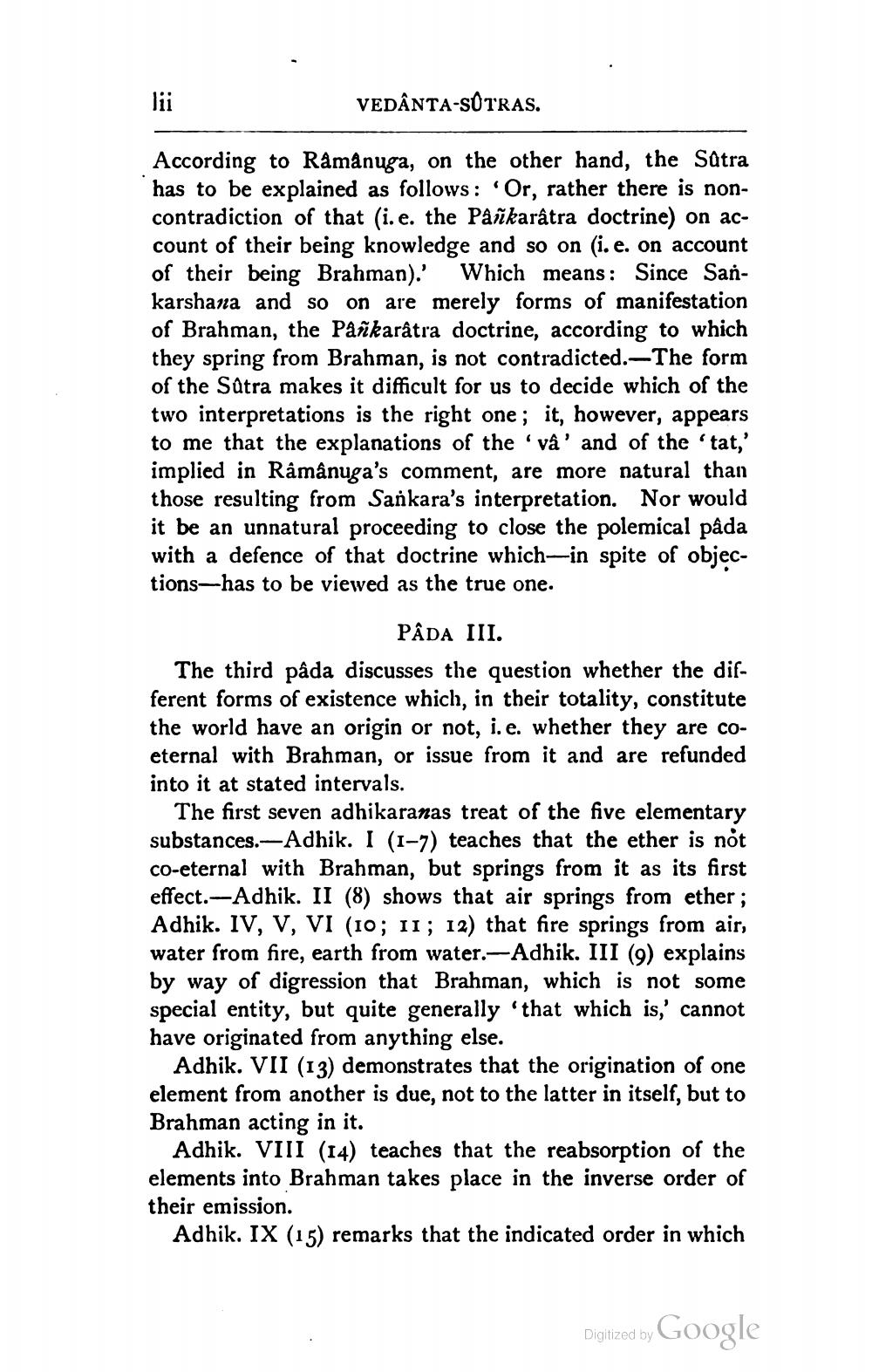________________
lii
VEDANTA-SUTRAS.
According to Râmânuga, on the other hand, the Sûtra has to be explained as follows: 'Or, rather there is noncontradiction of that (i. e. the Pâñkarâtra doctrine) on account of their being knowledge and so on (i. e. on account of their being Brahman).' Which means: Since Sankarshana and so on are merely forms of manifestation of Brahman, the Pâñkarâtra doctrine, according to which they spring from Brahman, is not contradicted.-The form of the Sutra makes it difficult for us to decide which of the two interpretations is the right one; it, however, appears to me that the explanations of the 'vâ' and of the 'tat,' implied in Râmânuga's comment, are more natural than those resulting from Sankara's interpretation. Nor would it be an unnatural proceeding to close the polemical pâda with a defence of that doctrine which-in spite of objections-has to be viewed as the true one.
PÂDA III.
The third pâda discusses the question whether the different forms of existence which, in their totality, constitute the world have an origin or not, i. e. whether they are coeternal with Brahman, or issue from it and are refunded into it at stated intervals.
The first seven adhikaranas treat of the five elementary substances.-Adhik. I (1-7) teaches that the ether is not co-eternal with Brahman, but springs from it as its first effect.-Adhik. II (8) shows that air springs from ether; Adhik. IV, V, VI (10; 11; 12) that fire springs from air, water from fire, earth from water.-Adhik. III (9) explains by way of digression that Brahman, which is not some special entity, but quite generally 'that which is,' cannot have originated from anything else.
Adhik. VII (13) demonstrates that the origination of one element from another is due, not to the latter in itself, but to Brahman acting in it.
Adhik. VIII (14) teaches that the reabsorption of the elements into Brahman takes place in the inverse order of their emission.
Adhik. IX (15) remarks that the indicated order in which
Digitized by Google




